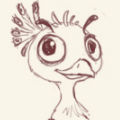一、简单句和并列句
1. 简单句的五种形式: (1)主语+谓语(不及物动词); (2)主语+谓语(及物动词)+宾语; (3)主语+谓语+宾语+补语; (4)主语+谓语+间接宾语+直接宾语; (5)主语+系动词+表语。 两类系动词:①be动词; ②一些实义动词用作系动词:feel, taste, smell等;
2. 并列句:一个句子当中包含两个或更多互不相依存的主谓结构,中间用一些连接词连接起来的句子。 并列句不能只用逗号隔开,而要用连接词连接。 连接词: (1)并列关系句型:连接词有and, as well as, either…or…,neither…nor…,not only…but also… eg: Last year I met kate and we became friends. Either my uncle can do it, or my aunt can do it.
(2)转折概念并列句型:转折词有but eg: It has no mouth,but it can talk. (3)对比关系的并列句型: eg: He liked sports,while I would rather collect stamps.
练习:2009年6月阅读 Cerling’s team collected tap water samples from 600 cities and constructed a mop of the regional differences.(简单句) Most hydrogen and oxygen atoms in water are stable , but traces of both elements are also present as heavier isotopes . (并列句) 简单句和并列句是复合句的基础。
二、句子成分
句子六大成分:主谓宾、定状表。 主语、宾语和表语:通常由代词或者名词构成, 定语:修饰名词; 状语:修饰形容词或者动词; 表语:接在系动词后面;
(一).代词:人称代词、物主代词、反身代词、指示代词、不定代词。 1人称代词:第一、二、三人称,主格、宾格、所有格; I,you ,he,she, it, me, you, him, her, it, my, your, his, her, its. 2 物主代词 ①形容词性物主代词:my, your, his, her, our, their,后面加名词; ②名词性物主代词:mine, yours, his, hers, ours, theirs,后面不能加名词。 eg: May I borrow your pen?
Mine is missing.
3反身代词:通过反身代词指代主语,使动作发出者把动作在形式上反射到发出者本人。强调人称问题。 eg:I myself took Mary to the airport. I cooked it myself.
4. 指示代词:this, that, these, those 5. 不定代词:some,someone,something,any,anyone,anything,no,no one,nothing,all,both,neither,either,each,every,everybody,everyone,everything. 一些比较重要的不定代词之间的区别: (1)all, each, every: ① all和every可以指代三个或三个以上的人或物;all可以表示所有东西的总和,是一个不可分割的整体; each只能表示两个或两个以上的人,侧重个体; ② all和every侧重整体,each侧重个体; eg:Every staff of the university contributed to the fund. Two girls came, and I gave an apple to each.
(2)everyone&every one everyone等同于everybody,all people ,指的是所有的人; eg:Everyone thinks they have the right to be here. every one既可以指人,也可以指物,强调一个个体,通常用every one of ; eg:Every one of us has faults and shortcomings. Every one of the films we have shown this year has been a succes.
(3)no one&none no one 只能指人,none既可以指人,也可以指物,none后面还可以接of; eg:No one failed the examination. None of the students failed the examination.
6. it 的用法 (1)指代人,通常用于口语中; (2)书面语: ① it 用来指代时间、距离、温度、天气等 eg:It's three years since I saw him. ② it 用来前指或者后指 eg:I've lost my book. Where is it? There is no doubt about it that he was a fine teacher. ③ it 做形式主语 eg:Is it possible to learn typewriting very quickly? ④ it 做形式宾语,通常放在谓语动词和宾语补足语(形容词)之间,真正的宾语放在宾补之后 常见动词有:feel, consider, find, believe, make, take, imagine, think, suppose, regard eg:She thinks it no use telling me. He has made it clear that he wouldn't agree to the plan.
⑤ it 用于强调句,构成句型It's…that/who… 如何区分强调句中的it和形式主语中的it? eg:It's clear that they have won. 如果It's和that去掉后,剩下的部分依然能构成完整的句子,就是强调句;否则,即为形式主语。
(二)名词
1. 可数名词 有单复数之分,若名词为单数,通常前面要加冠词a/an、the进行限定;若名词为复数,可以加上the,或者直接用复数名词,或者加上数词来进行限定。 名词的复数形式可以直接加s/es,以y 结尾的,变y 为i ,再加es,还有一些特殊形式的。 有些单数名词的形式,是集合名词,可以用作复数,如police,cattle,people,mankind等; eg:Several hundreds police were on duty at the demonstration yesterday. Cattle are allowed to graze on the village common. 不可数名词:通常是物质名词或者抽象名词
2. 不可数名词:通常是物质名词或者抽象名词,其前可以不加任何东西,若有特指,可以加the. 前面可以加上单位词,进行分类: 常见单位词: ①a piece of +advice/bread/cloth/fortune/information/music/muse ②a bit of、an item of、an article of
3. 名词在翻译中遇到的问题: (1)不可数名词和可数名词间的转换形式: eg:water&waters(水域、海洋),sand&sands(沙滩),wood&woods(树林),goods(商品),ash和ashes(废墟) (2)名词表示特指时,可以加冠词 ①不定冠词:a/an,通常表示一,但是不强调数目,翻译时注意; eg:Germany is a European country. ②定冠词:表示特定或特指 eg:Is this the book that you are looking for? 定冠词还可以使用于一些比较独特的语言现象:如指代地球或宇宙这种独一无二的事物 the+名词:表示全部或者整体 eg:Do you know who invented the computer? 用于乐器或专有名词前,如play the piano、the Thames
(三)数词
数词分为基数词和序数词
1. 表示大约的词汇:about, approximately,around,roughly,some,more or less, or so; eg:About 200 people were killed in the crash. The town is 5 Miles or so from here. 2. 表示多于的词汇:above,more than, over 3. 表示少于,不到的词汇:almost,below,less than, under eg:It's 2:57, and it's almost 3 o'clock 4. 一些可以直接表示数字的单词: dozen、score、decade、hundred、thousand、million 这些词前面出现基数词,表示确切的数时,不能加复数;若不能表明确切数字,只是说大约有多少的时候,以上这些词不可以加确切的基数词,但是可以将其变为复数,后加of; eg:There are millions of kinds of matter in the world.
(四)形容词和副词
1. 定语
用来修饰名词,通常是形容词;若是单个形容词,一般放在修饰名词前;若为词组,一般放在修饰名词之后; 形容词词组的两种情况: (1)成对的形容词; eg:She has many pencils, blue and red. (2)形容词短语: eg:I think he is a man suitable for the job. 形容词还可以做表语,放在be动词之后;
英语中有一些词语作表语和作定语时,含义会有所不同: (1)certain: 作定语时,表示特定的: eg: A certain Mr. Wang just came here to look for you. 作表语时,表示当然的,一定,相当于be sure;
(2)complete: 作定语时,表示完全的: 作表语时,表示完成的或完美的;
(3)ill:作定语时,表示坏的;作表语时,表示有病的; (4)late: 作定语时,表示已故的;作表语时,表示晚的、迟到的; (5)ready:作定语时,表示现成的;作表语时,表示准备好的、愿意做……; (6)present:作定语时,表示目前的,相当于current;作表语时,表示出席,参加;
the+形容词:表示一类人; eg: the old, the poor, the blind, the rich, the young, the wounded
2. 状语: 通常由副词构成,副词可以修饰动词,形容词,乃至整个句子; 副词通常是褒义的,有部分是有否定含义的,常见否定含义副词有seldom,hardly,rarely,scarcely; 其它副词通常是表示肯定的概念;
3. 形容词和副词的比较级: (1)一些没有比较级的形容词和副词: ①单词本身的含义是表示比……年长、比……优秀、比……优等时,没有比较级概念; 如supreme,inferior,junior,senior,priorat ,后面搭配的介词一般是to,而不用than. ②有些单词本身的含义即是最,独一无二,没有比较级概念; 如absolute,entire,excellent,favorite,final.
(2)同级比较和异级比较: ①同级比较:as…as…/…times as… ②异级比较:(倍数或修饰词,表示多或少)+比较级+than 常见的修饰比较级的词有:much、still,even,by far,a bit,a little, a good deal或者倍数; eg:The photography of Mars taken by satellite are much clearer than those taken from earth. ③比较级特殊用法词汇: more…than…: eg:He is more clever than honest. the+比较级:越来越…… eg:The harder you work, the more you will learn.
三、时态和语态
一般 进行 完形
现在
过去
将来
(一)时态
1. 一般现在时 (1)表示经常性、习惯性的动作; eg:I get up at 7 o' clock in the morning. I leave school for home at 6 every evening. (2)客观真理,客观存在,科学事实; eg:The teacher told us: the earth moves around the sun. Shanghai lies in the east of China.
2. 一般过去时 两种变化形式:在动词后加ed或不规则变化的动词; 在确定的过去时间里所发生的动作或存在的状态: 常用时间状语有:yesterday, last week, an hour ago, the other day, in 1982等; eg:Did you go to Shanghai last week?
补充:used to/be used to (1)used to + do:"过去常常",表示过去习惯性的动作或状态,但如今已不存在; eg:Mike used to take a walk. (2)be used to + doing: 对……已感到习惯,或"习惯于",to是介词,后需加名词或动名词; eg:Mike is used to taking a walk. He is used to taking a shower with cold water. (3)be used to do:被用来做…… eg:Leaves are used to fight enemies in kong fu movies as the weapons.
典型例题
---- Your phone number again? I ___ quite catch it.
---- It's 69568442.
A. didn't B. couldn't C. don't D. can't
答案A. 本句虽没有明确的时间状语,但从语意上看出,在听的时候没有听懂这个动作发生在过去,因此应用过去时。
一般过去式和过去完成时的对比: (1)过去完成时:过去的过去; eg:Before I came to Beijing, I had stayed in Shanghai. ① 一个句子里有两个谓语动词,一个发生在前,一个发生在后,发生在前的用一般过去时,发生在后的用过去完成时; eg:When the police arrived, the thieves had run away. ② 表示意向的动词,如hope, wish, expect, think, intend, mean, suppose等,用过去完成时表示"原本…,却未能…" eg:We had hoped that you would come, but you didn't. We had thought that he would take part in the competition,but he didn't.
③ 虚拟语气: 若虚拟的现象与过去事实相反,则用过去完成时; eg:If you had come to my birthday party, you would have seen Yaoming. 虚拟语气中可以用had+过去分词,表示对过去事实的虚拟; 3. 一般将来时 (1)shall/will, shall用于第一人称,常被will 所代替; eg:Which paragraph shall I read first? (2)be going to +不定式,表示将来;表示要发生的事情有了预先的计划、准备或有迹象表明要发生; eg:What are you going to do tomorrow? What will you do this afternoon? will表示纯粹的将来;
(3)be +不定式:表将来,按计划或正式安排将发生的事; eg:We are to/will discuss the report next Saturday. (4)be about to +不定式:意为马上做某事,后面不可以接时间状语; eg:He is about to leave for Beijing.
注意: (1)一般现在时有时也可表将来; eg:The train leaves at six tomorrow morning. ① 趋向性动词come, go, arrive, leave, start, begin, return的一般现在时表将来,主要用来表示在时间上已确定或安排好的事情。 eg:When does the bus star? It stars in ten minutes. ② 在时间或条件句中,用一般现在时表将来; eg:I'll write to you as soon as I arrive in Beijing.
(2)现在进行时也可表将来:通常用于口语,翻译为打算……; come, go, start, arrive, leave, stay等词可以用进行时表将来;
4. 现在完成时 现在完成时用来表示之前已发生或完成的动作或状态,其结果对现在造成影响。 (1)过去发生的动作发生到现在,刚刚完成; (2)从过去发生的动作,发生到现在,刚刚告一段落,但是后面会继续发生; eg:I have just finished my homework. It has rained for 3 days.
过去时与现在完成时的区别: (1)过去时表示过去某时发生的动作或单纯叙述过去的事情,强调动作;现在完成时为过去发生的,强调过去的事情对现在的影响,强调的是影响。 eg:I came to Beijing in 1995. I have stayed in Beijing since 1995. (2)过去时常与具体的时间状语连用,而现在完成时通常与段的时间状语连用,或无时间状语; 一般过去时常用时间状语:yesterday, last week,…ago, in1980, in October…(具体时间) 现在完成时常用时间状语:for, since, so far…(长期的段时间) eg:He had dinner with me yesterday. I have played basketball for 3 hours.
(3)现在完成时可表示持续到现在的动作或状态,动词一般是延续性的,如live, teach, learn, work, study, know;过去时常用的非持续性动词有come, go, leave, start, die, finish, become, get married等; eg:He got married two years ago. I have lived in Beijing for 10 years.
用于现在完成时的句型
(1)It is the first / second time…. that…结构中的从句部分,用现在完成时。
It is the first time that I have visited the city.
It was the third time that the boy had been late.
(2)This is the… that…结构,that 从句要用现在完成时.
This is the best film that I've (ever) seen.
这是我看过的最好的电影。
This is the first time (that) I've heard him sing. 这是我第一次听他唱歌。
典型例题
---Have you ____ been to our town before?
---No, it's the first time I ___ here.
A. even, come B. even, have come C. ever, come D. ever, have come
答案D. ever意为曾经或无论何时,反意词为never,此两词常用于完成时。 This is the largest fish I have ever seen. It is / was the first time +that-clause 的句型中,从句要用完成时。
since和for的用法: since 用来说明动作起始时间,for用来说明动作延续时间长度; eg:I have lived here for more than twenty years. I have lived here since I was born. for后面多接一段时间,而since后面则接一个时间点,若since后面也出现时间段,则在时间段后加ago; eg: I have lived here since twenty years ago. 错句:I have worked here since many years.
since句型: It is +一段时间+ since从句,since从句要用一般过去时; eg:It is two years since I became a postgraduate student. It is three years since I joined the army.
5. 进行时态:一般进行时,过去进行时,将来进行时; 6. 现在完成进行时:have/has+been+doing 现在完成进行时和现在完成时的区别: eg:It has rained for 3 days. It has been raining for 3 days. 现在完成时不强调某一动作在某段时间内持续发生,现在完成进行时表示某一时间段内某动作持续发生。 eg:I have been learning English for 5 years. I have been learned English for 5 years.
(二)语态 一般 进行 完成 现在 am/is/are+过去分词 am/is/are+being+过去分词 have/has+been+过去分词 过去 was/were+过去分词 was/were+being+过去分词 had+been+过去分词 将来 will+be+过去分词 被动语态基本形式:be+动词过去分词; eg:Forest have been cleared. They were given a warm send off. Their wedding will be held in the church. 不强调施动者,而只强调受动者; eg:The book was written 20 years ago.
四、真题举例:
1. 真题2009年12月: Despite the hardship he encountered, Mark never ______________(放弃对知识的追求). 放弃:give up, abandon,quit 追求:pursuit give up/abandon/quit the pursuit of knowledge gave up/abandoned/quit the pursuit of knowledge
2. 真题2009年6月: The study shows that the poor functioning of the human body is _______ (与缺乏锻炼密切相关) is+doing/形容词: be closely related to: the lack of exercises:缺乏锻炼; is closely related to the lack of exercises
3. 真题2008年12月: Throught the project, many people have received training and (决定自己创业) have received:现在完成时; decided to:决定; 创业:launch their own enterprise decided to launch their own enterprise
4. 真题2008年6月: I can’t boot my computer now. Something must (一定出了毛病)with its operating system. 出了毛病:out of control Something must be out of contrlo/wrong with…
五、定语从句: eg:I know the girl. The girl comes from Beijing. I know the girl who comes from Beijing. 步骤: 1.找到两个句子中相同的名词; 2.将两个名词中的一个进行替换,若是人,用who替换;若是物,用which替换;that既可以指人,又可以指物; 3. 将who 或which引导的句子放在相同名词之后; eg:I like reading books. The books were written by O Henry. I like reading books which were written by O Henry.
eg:I planted a tree. The tree is taller than the house. The tree which I planted is taller than the house.
1. who/that/which所引导的句子必须放在相同名词之后; eg:The teacher prized the boy. The boy is my neighbor. The boy who the teacher prized is my neighbor.
eg:This is the book. You are looking for the book. This is the book which you are looking for. eg:This is the book. You are interested in the book. This is the book which you are interested in.
2. 谓语动词(结构)和后面的介词有两种关系:关系紧密&关系疏远; 关系紧密:谓语结构和介词合成在一起,联系紧密,不可分割,一旦分割意思就会发生改变; eg:look for, be interested in , look after, look at 定语从句中如果谓语结构和介词关系紧密,则介词必须保留在谓语结构的后面,不能做任何位置的改动;如果谓语结构和介词关系疏远,介词一般提到which/who/that的前面; eg: This is the book which you are looking for. This is the book which you are interested in. This is the book in which you are interested . This is the book which you asked for.
3. 关系代词和关系副词: eg:Beijing is the place. I was born in the place. Beijing is the place which I was born in. Beijing is the place in which I was born . 定语从句中,如果介词+which表示地点,则可以用where替换; Beijing is the place where I was born . eg: I can't forget the day. I join the army on the day. I can't forget the day which I join the army on. I can't forget the day on which I join the army . I can't forget the day when I join the army .
判断:This is the mountain village where I visited last year. This is the mountain village in which I visited last year. This is the mountain village which I visited in last year. 正确:This is the mountain village which/that I visited last year.
4. 判断关系代词和关系副词的方法: (1)不管是关系代词还是关系副词,都取决于从句中的谓语动词; 若该谓语动词为及物动词,则一定使用关系代词;若该谓语动词为不及物动词,且其后没有介词,则一定使用关系副词; eg:I will never forget the days when I worked together with you. I will never forget the days when I spent in the countryside. I will never forget the days which I spent in the countryside.
(2)通过判断先行词在定语从句中的成分 eg:Is this the museum (that ) you visited a few days ago? the museum:充当visit的宾语 Is this the museum ( in which/where ) the exhibition was held?
关系代词:前面句子里的先行词也要在后面的句子里充当主语或者宾语的成分; 介词+which,恰好表示时间和地点,可以替换成when,where这样的关系副词;
5 限定性定语从句和非限定性定语从句
(1) 非限定性定语从句:先行词(即名词)后有一个逗号; eg: In our school,there were 8 foreign teachers who come from Australia.(限定性定语从句) In our school,there were 8 foreign teachers, who come from Australia.(非限定性定语从句) 限定性定语从句:定语从句和关系词关系非常紧密,删掉定语从句后,整个句子意思会改变; 非限定性定语从句:定语从句和关系词关系不是很紧密,删掉定语从句后,整个句子意思不会改变,定语从句只起到补充说明的意义; eg:This is the house which we bought last month.
(2)非限定性定语从句:
①先行词是前面的整句话; eg: He won the first place in the competition, which is out of our expectation. We will spend the Spring Festival in Guangzhou, which was decided last year.
This is the house, which we bought last month.
② 非限定性定语从句:which引导非限制性定语从句只能放在后面,as则只能放在句子前面; eg: Smoking is harmful to our heath, which we know. Smoking is harmful to our heath, as we know. As we know, smoking is harmful to our heath. eg:Alice received an invitation from her boss( ) came as a surprise . A. It B. that C. as D. which
(3)that和which的区别: ①什么时候不能用that,只能用which:非限定性定语从句中,即逗号之后; eg:The tree , that is 400 years old, which is very famous here.
②什么时候不能用that,只能用which:非限定性定语从句中,即逗号之后;介词后面不能用that,只能用which; eg:The tree , that is 400 years old, which is very famous here. We depend on the land, from which we can get our food . in that:因为;
(4)什么时候不能用which,只能用that: ① 前面的先行词是不定代词,包括all,anything,nothing,the one, much,little等; eg:Have you taken down everything that Mr. Lee has said ? ② 如果先行词中出现了the only, the very等; eg:This is the only way that we can think out. ③ 如果先行词中出现了序数词和形容词最高级; eg:This is the best film that I have ever seen. ④ 如果先行词中即有人,又有物; eg:They are talking about the school and the teachers that they visited yesterday.
例:Medical researchers are painfully aware that there are many problems (他们至今还没找到答案). they havn't found solutions/answers to these problems. there are many problems which they havn't found solutions/answers to.
例:(与我成长的地方相比),this town is more prosperous and exciting. Compared with the place in which/where I grew up,
例:(听到他告诉我的消息),I couldn’t help laughing. Hearing the news which/that he told me,
例:Career experts say that one of the ways job seekers can stay safe while using the Internet to search out jobs is to conceal their identities.
当先行词中是the way的时候,后面的连接词可以用that,可以用which和in which,甚至可以不填;
六.名词性从句
名词性从句:主语从句、宾语从句、补语从句及同位语从句; 定义:在句子中起名词作用的句子,且在句子中能担任主语、宾语、表语、同位语、介词宾语等成分;
(1)同位语从句 eg:I know the man, the president of the New Oriental School. 同位语从句:对前面名词的进一步解释; 英语中的简单句:陈述句、一般疑问句、特殊疑问句。 eg:He is a student. Are you a student? Who is a student? 同位语从句:关系词不再和前面的名词有关系,而是取决于后面的从句; eg:I know the fact. He is a student. I know the fact that he is a student.
eg:I have a question. Are you a student? I have a question weather you are a student. I have a question who is a student.
① 从句仍然接在名词之后,名词有可能为answer,belief,concept,explaination,fact,hope, message, news, promise, prove, question, thought等,后面可以接同位语从句; 形式:名词+从句;连接词取决于后面的从句是什么样的形式; 如果是陈述句,直接加that引导; 一般疑问句:先把一般疑问句变成陈述句语序,然后在其前加上weather或者if; 特殊疑问句:直接保留特殊疑问词,后面的句子变成陈述句语序; eg: The news soon spread the whole school. They had won the game. The news that they had won the game soon spread the whole school. The news that they had won the game came. News came that they had won the game.
eg: Information has been issued. More middle school student will be adimited to universities. Information that more middle school student will be adimited to universities has been issued. Information has been issued that more middle school student will be adimited to universities.
eg: The question was answered by the family doctor Weather we should send for an specialist. The question weather we should send for an specialist was answered by the family doctor.
同位语从句的形式和定语从句的形式非常相似,两者最大的区别在于同位语从句的功能在于对前面的名词进行进一步的解释,定语从句的功能在于对前面的名词进行进一步的修饰和限定;
如果关系词为weather,how, what, 一定是同位语从句; 如果名词前的关系词为when, where, why,若when前面的名词是地点,where前面的名词是时间,why 前面的名词是原因,那么一定是定语从句;若when, where, why前面不是地点、时间和原因,那么是同位语从句; 如果关系词为which,则通过中文翻译进行区分;若which能翻译成哪一个,则一定是同位语从句,若不能,则为定语从句; 如果关系词为that,则需要对句子进行成分分析来判定;如果that在句子中充当成分,则是定语从句,否则即为同位语从句;
eg:The suggestion that she should stay in the room is good. The suggestion that she has given in the meeting is good.
例:The fact that ordinary citizens are now starting to think seriously about the nation's moral climate, says this ethics professor at the University of Chicago, is reason to hope that new ideas will come forward to improve it.
(2) 宾语从句
从句部分的连词取决于从句时一般疑问句、特殊疑问句还是陈述句; eg:We must find out who did all these. I want to know weather he will come. I hope that he will come.
① 宾语从句的时态:如果宾语从句前的动词是过去式,则宾语从句的时态应相应变成过去时态;如果宾语从句是客观事实或真理,不管宾语从句前的动词时什么时态,宾语从句都用一般现在时; eg:The teacher told us that the earth is round. eg:Todd Park, a local detective, said the method has helped him learn more about an unidentified woman whose skeleton was found near Great Salt Lake.
② 宾语从句后接陈述句,用that引导,则that一般可以省略; eg:I think that you are right.
③ 宾语从句如果谓语动词是doubt,后面接的一般疑问句通常用weather或if引导;如果前面的谓语动词是don't doubt,则后面从句的连接词一定是that; eg:I doubt weather he is telling the truth. I don't that he is telling the truth.
宾语从句如果谓语动词是wonder,句型为I wonder if,后面的连接词不能用weather;
④宾语从句的否定转移: ① think, believe, suppose, expect, fancy, imagine等动词后面宾语从句的否定词转移到主句中,即主句的谓语动词用否定式,而从句的谓语动词用肯定式; eg:I don't think I know you. I don' t believe he will come.
② 将seem, appear 等后的从句的否定转移到前面。
It doesn't seem that they know where to go.
It doesn't appear that we'll have a sunny day tomorrow.
(3)表语从句
构成方式: 若从句为陈述句,直接加that; 若从句为特殊疑问句:直接保留特殊疑问词,后面的句子变成陈述句语序; 若从句为一般疑问句:先把一般疑问句变成陈述句语序,然后在其前加上weather或者if;
eg:China is no longer what she used to be. The question is who is responsible for what has happened.
(4)主语从句:主语变成一个句子
构成方式: 若从句为陈述句,直接加that; 若从句为特殊疑问句:直接保留特殊疑问词,后面的句子变成陈述句语序; 若从句为一般疑问句:先把一般疑问句变成陈述句语序,然后在其前加上whether或者if; 位置:直接置于句首; eg:That the college will take in more students is true. Weather he will come or not hasn't been decided. Why he isn't here is not clear to everyone.
it 做形式主语的情况: (1)It is+名词+主语从句; eg:It is a pity that you should have to leave. (2)It is+形容词+主语从句; eg:It is clear that the whole project is due to failure. 如果是It is necessary/important/strange/natural+that引导的主语从句,从句中的谓语动词一定要用should+动词原形; eg:It is necessary that one should master the skills of operating computer.
(3)It is+过去分词+主语从句;It is said/planted/expected… eg:It is said that President Bush will visit our school next week. (4)It is+不及物动词+形容词表语形式+主语从句; eg:It seemed certain that he will win the prize.
七、 从句的判别和应用
从句的判别和应用: eg:Weather she will come or not is unknown.(主语从句) It is unknown weather he will come or not.(主语从句) I don't know weather he will come or not.(宾语从句) The question is weather he will come or not.(表语从句) The question weather he will come or not is not settled.(同位语从句)
例:09年6月真题 __________(很多人没有意识到的)is that Simon is a lover of sports , and football in particular . what many people didn't realize
例:08年12月真题 It was very dark, but Mary seemed to (本能地知道该走哪条路) . know which way to take by instinct 宾语从句
例:07年12月真题 In my sixties, one change I notice is that _________________ (我比以前更容易累了). I feel/get tired more easily than before
例:真题08年6月 Global warming may or may not be the great environmental crisis of the 21st century, but- regardless of whether it is or isn't - we won't do much about it.
例: Because they usually receive the same score on standard examinations. There is ofen disagreement at who is the better student, Bob or Hellen?
例:真题08年12月 Your resume should attract a would-be boss's attention by demonstrating _____ (为什么你是某个特定职位的最佳人选). 宾语从句 why you would be the best candidate for a certain position.
例: Since my childhood I have found that ________ (没有什么比读书对我更有吸引力). nothing is more attractive/appealing to me than reading
八 状语从句
状语从句:两个独立的句子中间用一些含义不同的连接词连接;状语从句用来表达两个句子之间的逻辑关系;分成原因状语、条件状语、结果状语、时间状语、地点状语、让步状语、目的状语、比较状语、方式状语等九大类型; eg:I got up late. I was late for school. Because I got up late, I was late for school. (原因状语从句) I got up late,so I was late for school. (结果状语从句)
1. 地点状语:
地点状语从句通常由where, wherever,everywhere 引导; eg:Where I live there are plenty of trees. Wherever you work, you will gain much valuable experience as long as you are willing to work. Wherever=no matter where Everywhere they went, they were warmly received. Where there is a will, there is a way. where:不能翻译成在……地方时,通常翻译为如果,表示在……条件下; eg: Where you are confident,you will succeed.
eg:Where previously the bank had concentrated on the big infrastructure projects , such as dams, roads and bridges,it begin to switch to projects which directly improved the basic services of a country. concentrated on :集中于;
2. 方式状语从句: 方式状语从句通常由as,,as if, as though,the way, what引导; eg:Always do to the others as you would be done by. When enter rome do as the romans do . (1)as从句带有比喻的含义,意思是"正如…","就像";
(2)as if/though:"仿佛……似的","好像……似的"; 有时用虚拟语气,有时不用; eg:They completely ignore these facts as if (as though) they never existed. (与事实相反,谓语用虚拟语气。) He looks as if (as though) he had been hit by lighting. (与事实相反,谓语用虚拟语气。) It looks as if the weather may pick up very soon. (实现的可能性较大,谓语用陈述语气。)
(3)the way:可以连接两个句子,表达就像……一样; eg:I should do the job the way my father did. Many Europeans now apparently view the US. the way many Americans view Mexican as a cheap place to vacation, shop and party.
(4)what:就像,犹如; eg:Air is to man what/as water is to fish. 句型:A is to B what C is to D. eg:A1 Gore calls global warming an "inconvenient truth," as if merely recognizing it could put us on a path to a solution. put sb. on a path to a solution:找到解决的办法;
3. 目的状语从句
可以由that, so that, in order that, lest, for fear that, in case等词引导; lest:以防;从句中的谓语动词必须用should+动词原形; eg: He wrote the name down for fear that(lest) he should forget it. He took the umbrella with him lest it should rain.
in case:以防;与lest不同,从句里的时态不做特殊变化; eg:Take the umbrella with you in case it rains.
for feat that:和lest保持一致; eg:A variety of activities should be organized so that participants can remain active as long as they want and then go on to something else without feeling guilty and without letting the other participants down. let…down…:让……感到气馁;
4. 结果状语从句
结果状语从句常由so… that 或 such…that引导;so保留,that可以省略;如此……以至于……; eg:He didn't abide by the contract so that he was fined. He was so excited that he couldn't fall asleep. He made such an inspiring speech that everybody got excited.
比较:so和 such (1)so:so +形容词、副词+that;so+形容词+a/an+名词+that; eg:The wind was so strong that we could hardly move forward. He run so fast that I couldn't catch up with him. It was so hot a day that crops wilted. He is so lovely a boy that everyone loves him.
(2)such:such+a/an+形容词+名词+that eg:It was such a hot day that crops wilted. He is such a lovely boy that everyone loves him.
5. 比较状语从句: than, as…as…,not so as…,(not) the same as, the+比较级; eg:Light travels fast than sound. the+比较级: eg:The sooner,the better. eg:Girls are thus seen as less valuable than boys and art kept at home to do housework while their brothers are sent to school - the prophecy(预言) becomes self- fulfilling, trapping women in a vicious circle (恶性循环) of neglect.
(1)当……的时候:while, when, as ; when:强调一件事情正在发生的时候,另外一件事情突然发生; eg:When I was watching TV, my mother came back. while:强调两个动作同时进行,一边……一边……; eg:My father is cooking while my mother is reading newspaper. as:"随时间推移" eg:As time went by, the days became longer and longer.
(2)一……就……:as soon as ,主将从现;用directly,immediately, instantly连接两个句子;一些名词如the minute,the moment, the instant也可表示;no sooner… than, hardly… when后面的句子需要倒装; eg:I will write to you the moment/minute I arrived in Paris.
(3)特殊单词:by the time that, every/each time(使用时后面不要再加when)
(4)till&until: ① 肯定形式表示的意思是"做某事直至某时",动词必须是延续性的; 否定形式表达的意思是"直至某时才做某事",一般用until,动词为延续性或非延续性都可以; eg: I slept until midnight. Wait till I call you. She didn't arrive until 6 o'clock.
② Until可用于句首,而till通常不用于句首,通常用于句中; eg: Until you told me, I had heard nothing of what happened.
eg:As you sleep you pass through a sequence of sleep states—light sleep, deep sleep and REM (rapid eye movement) sleep—that repeats approximately every 90 minutes.
7. 条件状语从句: (1)连接词:if, once, as long as, on condition that ① 如果引导的条件可以实现,主将从现; ② 如果引导的条件和事实相反,则用虚拟语气; eg:If winter comes can spring be far behind. As long as it doesn't rain, we can play. You can go out on condition that you wear an overcoat.
Modern cars are far tougher to steal, as their engine management computer won't allow them to start unless they receive a unique ID code beamed out by the ignition (点火) key.
8. 原因状语从句
连接词:because, since, as, for ,now that, in that, owing to, due to, thanks to, because of , as a result of;
比较:because, since, as和for
1) because语势最强,用来说明人所不知的原因,回答why提出的问题。当原因是显而易见的或已为人们所知,就用as或 since。
I didn't go, because I was afraid.
Since /As the weather is so bad, we have to delay our journey.
2) 由because引导的从句如果放在句末,且前面有逗 号,则可以用for来代替。但如果不是说明直接原因,而是多种情况加以推断,就只能用for。
He is absent today, because / for he is ill.
He must be ill, for he is absent today.
now that :既然;
in that :因为,通常只能放在句中,强调重要的,唯一的的原因; eg:Now that this semester is finished, I am going to rest a few days and take a trip. Human beings are different from animals in that human can speak and think.
owing to, due to, thanks to, because of , as a result of等短语后面只能接词或短语,不能接从句;
9. 让步状语从句
常见的连接词有though, although,as, while, even though
区分though,although,as eg:Although/though he is a child, he can live by himself. as 表示虽然的时候,要进行倒装; Child as/though he is , he can live by himself. eg:Although/though she works very hard ,she makes very little progress. Hard as she works, she makes very little progress. Although/though she is young, she has travelled to many countries to put shows . Young as she is, she has travelled to many countries to put shows .
while:连接两个句子,表示虽然,但是; eg:He is experienced while he is young.
真题分析:
1.The anti-virus agent was not known (直到一名医生偶然发现了它) until a doctor find it by chance.
2.I would prefer shopping online to shopping in a department store because __________(它更加方便和省时) it is more convenient and timesaving.
3.But since water is much cheaper than wine, and many of the fancier brands aren’t available in stores, most diners don’t notice or care.
4. While there’s no question that continuous stress is harmful, several studies suggest that challenging situations in which you’re able to rise to the occasion can be good for you.
九 从句的复习
复合句:定语从句、名词性从句、状语从句。 定语从句: 1. that,which,who的使用。一个句子当中有两个相同的名词,将其中的一个名词进行替换,如果是人,用who;如果是物,用which;that既可以指人又可以指物。 2. 谓语动词(结构)和后面的介词有两种关系:关系紧密&关系疏远;定语从句中如果谓语结构和介词关系紧密,则介词必须保留在谓语结构的后面,不能做任何位置的改动;如果谓语结构和介词关系疏远,介词一般提到which/who/that的前面; 介词加which正好表示时间,可以表达成whe- n;表示地点时,可以表达成where;表示原因时,变成why; 3. 限定性定语从句和非限定性定语从句。限定性定语从句:定语从句和关系词关系非常紧密,删掉定语从句后,整个句子意思会改变;非限定性定语从句:定语从句和关系词关系不是很紧密,删掉定语从句后,整个句子意思不会改变,定语从句只起到补充说明的意义;
(2)非限定性定语从句: eg: He won the first place in the competition, which is out of our expectation. ② 非限定性定语从句:which引导非限制性定语从句只能放在后面,as则只能放在句子前面
名词性从句:主语从句、宾语从句、表语从句及同谓语从句; 形式:名词+从句;连接词取决于后面的从句是什么样的形式;如果是陈述句,直接加that引导; 一般疑问句:先把一般疑问句变成陈述句语序,然后在其前加上weather或者if;特殊疑问句:直接保留特殊疑问词,后面的句子变成陈述句语序;定义:在句子中起名词作用的句子,且在句子中能担任主语、宾语、表语、同谓语、介词宾语等成分; eg. Yuminhong, the president of New Oriental School.
状语从句:两个独立的句子中间用一些含义不同的连接词连接;状语从句用来表达两个句子之间的逻辑关系;分成原因状语、条件状语、结果状语、时间状语、地点状语、让步状语、目的状语、比较状语、方式状语等九大类型;
定语从句是名词+关系词+从句,关系词的用法取决于名词的问题; 名词性从句:同谓语从句:名词+关系词+从句,关系词跟后面的从句有关系,如果是陈述句,直接加that引导;一般疑问句:先把一般疑问句变成陈述句语序,然后在其前加上weather或者if;特殊疑问句:直接保留特殊疑问词,后面的句子变成陈述句语序; 宾语从句:动词+关系词+从句;表语从句:系动词+关系词+从句;主语从句:关系词+从句+谓语动词;名词性从句,其关系词的来源取决于后面的从句的性质。 状语从句:完整句子1+逻辑关系词+完整句子2;
如何区分定语从句和同谓语从句:whether,what,how接在名词后面一定是同谓语从句;关系词是when ,where,why如果前面不是时间、地点、人物,那么是同谓语从句;如果是的话,则为定语从句;如果见到which的话,which在句中翻译成“哪一个”,就是同谓语;翻译不成“哪一个”就是定语从句;that 就是看它在句中是否充当成分,如果充当成分就是定语从句;不充当成分就是同谓语从句;
Whether the plan is feasible remains to be proved. (主语从句) 是否这个计划是可行的仍然值得去考证。
I worry about whether he can pass through the crisis of his illness. (宾语从句) 我担心他是否能度过疾病的危险期。
They are investigating the question whether the man is trustworthy. (同谓语从句)
At time when hiring qualified people is becoming more difficult(定语从句),employers who can eliminate invalid bias from the process have a distinct advantage. (定语从句) 在雇佣合格人才变得越来越困难的时期,那些能够在雇佣过程中消除站不住脚的偏见的雇主具有明显的优势。
Eg. While (让步状语从句)even the modestly educated sought an elevated tone when (时间状语从句)they put pen to paper before the 1960s, even the most well regarded writing since then has sought to capture spoken English on the page. 在20世纪60年代之前,当人们伏案写作的时候,即使那些接受教育不多的人也会追求一种高雅的风格,但是从那以后,即使是那些令人敬仰的文学作品也在追求一种口语的风格。
Eg. About 45% of the world's population lived in the climate zone where mosquito transmit disease . 全球45%的人口都生活在这样的一个区域,这个地方的蚊子会传播疾病。
Eg.He was an Asian American (who was) raised in a household where respectful zones in authority was show by averting your eyes . (定语从句) 他是一个亚裔美国人,在他生长的环境当中,避免与有权威的人对视是对对方尊重的一种表现。
十 as的用法
as在状语从句中可以表示时间、原因、让步;
as的基本使用情况: 1、as作介词,表示作为,一般情况下后面只能接一个名词; eg. She works as a doctor. As a League member, I'll take the lead in everything. 作为一名团员,事事我都要身先士卒。 2、as作关系代词,as引导这样的从句一般最好是放在句子的开头; eg.The moon travels round the earth once every month which is known to everybody. As is known to everybody,the moon travels round the earth once every month. It is known to eveybody that the moon travels round the earth once every month. (主语从句)
As we have seen,the focus of medical care in our society has been shifting from curing disease to preventing disease - especially in terms of changing our manyunhealthy behaviors, such as poor eating habits, smoking and failure to exercise.
3、as 充当连词来构成状语从句; ① 时间状语从句(当.....的时候),eg. As the summer comes, the day becomes shorter and shorter. ②原因状语从句(表示显而易见的原因),和since 在用法上保持一致。 eg. As she was not feeling well, we all sold her to stay at home. 因为她感觉到不舒服,我们都叫他留在家里。 ③让步状语从句,although 引导的句子可以转换成as 的用法。 eg. Although she may fail.... Fail as she may eg. Although the graph is simple. Simple as the graph is.
eg. Although he is rich , he doesn't have any friends. Rich as he is, he doesn't have any friends.
④方式状语从句(就像....一样;正如....一样); eg. Do as the instruction says. 按照说明书上的要求去做。 He came as we expected. 他就像我们所期待的那样来了。 ⑤比较状语从句 eg. I'm as tall as you.
as短语: as long as 只要; such as 例如 ; as soon as 一....就...... ; so as to 为了;as if 好像; as though 好像; just as 正如; You can go where you like as long as you getback before dark. 你可以去你任何想去的地方,只要你在天黑之前回来。(as long as 引导条件状语从句) He talks as if he knew all about it. 他谈起这件事来就好像什么都知道似的。(as if 引导方式状语从句,从句中常用虚拟语气) It is just as I told you. 情况正如我跟你说的一样。(just as引导表语从句)
翻译题目: 1、尽管他们很小, although they are small / small as they are 2、你所描述的这种人(Such people as you described) are rare nowadays. 3、This basket is 和那个一样的大(as big as that one)。
长句: 1. As the words begin to flow, the ideas will come out from the shadows and let themselves be captured on your notepad or your screen. (分析) as是连词的作用,译为“当....时候”,引导时间状语从句 (译文) 当文字开始倾泻,观点就会明朗,自己就会跃然纸上或是呈现在你的屏幕上。 2. Most likely, you will believe that this will take more time than you actually have and you will end up staring blankly at the pages as the deadline draws near. (分析)as引导的是时间状语从句,译为“随着.....” (译文) 很有可能,你会相信这比你实际用的时间要长,随着最终期限的临近,你就会以茫然地盯着纸这样的方式而结束。 as 可以作介词、关系代词、连词,分别引导状语、定语从句、状语从句。
It is known to everybody that It is that 形式主语,强调句型 强调句型:无指代关系,也无实义,去掉后剩余的词仍能单独组成一个完整的句子。 eg. It is in 1998 that I came to Beijing. It is clear that I came to Beijing. 我来到北京这件事是显而易见的。(形式主语)
简单句的构成,简单句中最主要的部分就是时态和语态的问题;语法的真正考查只有在翻译和写作当中。另外就是简单句的句型形式,复合句就是两个简单句之间的逻辑关系,逻辑关系搭配不一样才会形成不同的复合句形式;三大类复合句:名词性从句、定语从句、状语从句;在这些句子中反复出现的单词就是as;高级语法中将会讲定语从句的省略、状语从句的省略、分词作状语、分词作定语以及独立主格结构、虚拟语气的使用、倒装、否定结构的运用。





 Thank you ~~~
Thank you ~~~ 












